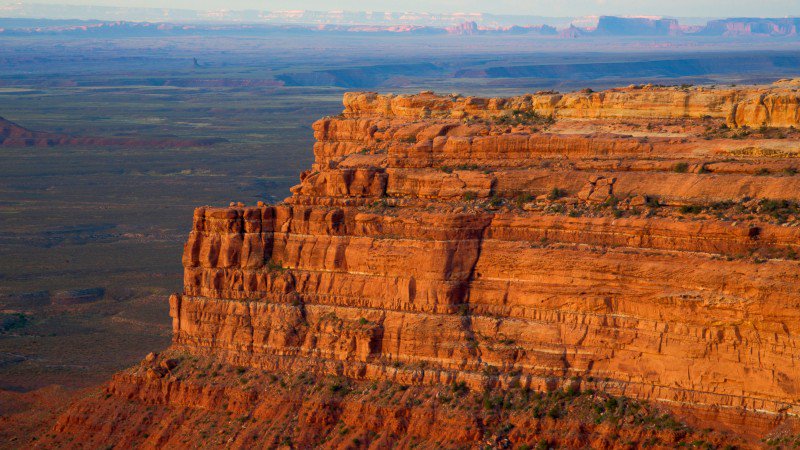
The Cedar Mesa Valley of the Gods is part of the 1.35 million-acre Bears Ears National Monument in southeastern Utah, which protects the area’s most significant cultural landscapes. Photo: Bob Wick/The Bureau of Land Management
On Monday, Secretary of the Interior Ryan Zinke recommended that President Trump reduce the size of the controversial Bears Ears National Monument in southeast Utah, which Barack Obama created in December during the final days of his presidency. If Trump acts on the recommendation, the move to reduce the monument will almost certainly end up in court.
According to a memorandum released June 12, Secretary Zinke’s review “shows that rather than designating an area encompassing almost 1.5 million acres as a national monument, it would have been more appropriate to identify and separate the areas that have significant objects to be protected to meet the purposes of the Act, including that the area reserved be limited to the smallest area compatible with the proper care and management of the objects.”
The memo does say that certain places within the current national monument deserve protection, a list that includes “rock art, dwellings, ceremonial sites, granaries, and other cultural resources that reflect its long historical and cultural significance to Native Americans.” But Zinke’s memo suggests that those resources can be better managed if the national monument is reduced in size and tribes are given Congressional authority to co-manage it.
In a conference call with reporters, Zinke said he had not yet decided how much to recommend that Bears Ears be reduced in size. Even as he would recommend a reduction, Zinke recommended that Congress step forward and establish other designations where the monument might shrink. Such areas could include National Conservation Areas or National Recreation Areas—designations that generally allow more uses and have fewer protections. The goal, he said, was to give Congress more of a say in the process. But such designations would also require an act of Congress, and are similar to the legislation that Utah Congressman Rob Bishop tried and failed to pass in previous years.
Asked why it would work now, Zinke replied, “I would give it one word: President Trump.”
Encouraging President Trump to undo some protections of the Bears Ears in hopes that a sclerotic Congress would sweep up behind him and add new protections struck one conservationist as dangerously backward. “It’s like not paying your mortgage in hopes of one day planning on winning the lottery,” said Josh Ewing, executive director of Friends of Cedar Mesa. If Zinke and Trump truly had interest in protecting the Bears Ears, the issue would first go to Congress, which is the only body legally certain to have power over its future—not stripped of protection first, then handed to Congress, he said. Now it will all end up in legal limbo due to lawsuits, he said.
Zinke’s recommendations comes just over a month after Trump signed an executive order immediately reviewing all national monuments made or expanded to 100,000 acres by the Antiquities Act since 1996. Secretary of Interior Ryan Zinke was asked to report back to the president in 120 days, after gathering public comments. The order called for a shorter comment period for the more controversial Bears Ears (it ended on May 26), followed by an interim report about Bears Ears “and such other designations as the Secretary determines to be appropriate for inclusion” within 45 days. That report was revealed Monday.
During his early May “listening tour” in Utah, Zinke visited not only Bears Ears, but also Grand Staircase-Escalante National Monument, which had been a considered a target for shrinking or…




